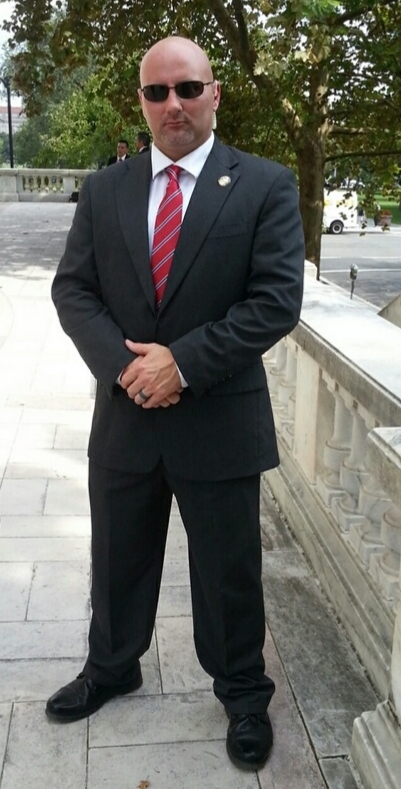A resume that works - so you will too.
Along with your headshot, your resume is the single most important marketing tool you will ever have.
99% of the time your Headshot/Resume is responsible for you getting
your job. It is the 1st impression that Casting see’s and the decision to look at you further came directly from the Professional look of your Headshot and how your information is presented.
Like Everything in our Industry, there is a standard format for an Acting Resume but so many variations of that standard that I will not be able to explain them all.
One other thing before I start, you need a resume even if you have not worked a single job yet. Don’t worry about the lack of jobs - create the resume with the rest of the information. Just remember you have the identical resume as Robert DeNiro and Julia Roberts had before their 1st job and look at what they did with it (They Took a lot of training courses and you should as well).
1). For a physical resume (many casting directors still require this), Your resume must be 8 X 10 - Same as your headshot. Standard paper is 8 ½ X 11 So if you print on paper (instead of right on the back of the Headshot) you will have to cut them down to 8 X 10.
2). You need to be sure you choose a nice easy to read font and type size that can be read. Choosing fancy fonts where the letters can’t be easily read or a small type size to get more on the paper defeats the purpose of your resume and can cost you work.
3). At the top of your Resume, you put your Name, Stats and Contact information. Your name should be in a large bold type (possibly a different color than the rest of the information).
Your stats usually means Unions that you are a member of (but do not put that you are Nonunion), Height, Weight, Hair and Eye color (some actors feel that since headshots are now in color putting Hair and Eye color wastes Space, but I feel it is best if all information casting needs are all in the same place), add if you sing or dance (if you sing add the voice range) and your contact information (email, cell phone, pager, answering service, ETC)
That said - Many actors include their wardrobe sizes - If you do they MUST BE ACCURATE - I do this and I have gotten work because Casting needed to replace someone and fill a Uniform at the last minute - The downside is Resumes can be around For years and old information can cause issues.
Headshots sent to an Agent that represents you should have the agents name and contact information printed on them instead of yours.
Agents do not want to give their clients direct access to you - the Clients should have to call the agent about everything and anything.
Your general resumes should have your direct contact information on them. Today (especially in our market) many roles are cast outside the Agent/Casting Director system. Tho people casting those jobs need to find you, Immediately.
Among the things you should Never put on your resume:
1). Your Social Security Number or Union Membership Number
2). Your Home address
3). a statement that you are Non-Union
Next is your Jobs information or Experience
This Information is separated by the Type of work it is (Theatre, Film, Television, TV Commercials/PSA’S/Industrials, Print ETC) Jobs like Promotional Modeling and Trade shows and Events do not go on a Professional Acting Resume (they should have their own resumes so you can get more of that type of work).
The heading for each section should be in Bold (possibly a different color) and either flush with the left margin or centered.
The information on each job should be your part ( Fred Fripple, Policeman # 4, ETC) the Production Name and the Name of who the job was for (could be the TV or cable network, Production Company, Theatre, ETC). Some actors put the Director's name and this is fine if you met him/her and the actually Directed you.
A lot of people say Theatre goes 1st on your Resume (Because Casting Directors Know Theatre) others say Whatever your desired Career is goes 1st, I Say whatever Job you are applying for, goes 1st.
REMEMBER I am TOTALLY COMPUTER ILLITERATE but I know how to cut and paste the jobs a potential Employer is most interested in seeing - to the top of the list.
I Also know how to change the color of the type of the jobs that are similar to what I am applying for (If I am applying for a policeman job, then I change the type color of all police related jobs on my resume)
Education and Training goes next on the resume
You need to state the type of class, the teacher, and then where the class was given.
Then your Special Skills
Sports you excel in, Languages/Dialects spoken, Combat Skills, Professional (Police, Fireman, Armed Services, ETC) Skills, Juggling,
Examples, you can look at 3 of my Resumes
My standard Acting Resume
http://www.bdragonuk.com/uploads/Brian_Dragonuk_Resume_2009-2.pdf
My Live Practical Training Resume for Medical Training (Standardized patient work)
http://www.bdragonuk.com/uploads/Resume_Sp_work.pdf
My Live Practical Training Resume for Law Enforcement Training
http://www.bdragonuk.com/uploads/Resume__Law_Enforcement.pdf
You should also Review the information in the forum Section of DragonukConnects.com
In “The Acting Forum”
Choosing the Right Font for Your Acting Resume
http://www.dragonukconnects.com/forum_topic.php?forum_id=1&topic_id=378
http://www.youtube.com/watch?v=u-q6nHh9vLg&feature=channel_video_title
Why Your Actor Resume Isn’t Working by Sean Pratt
http://www.dragonukconnects.com/forum_topic.php?forum_id=21&topic_id=303
http://acting.suite101.com/article.cfm/form-follows-function--why-your-actor-resume-isnt-working



